The four seasons.
Have you ever once linked an album to a season as, when you discovered it, it highlighted a period of the year, or because its colours particularly remind you of a cold winter evening or a dazzling summer day?
By playing with all the colours of his musical palette, James Horner has this ability to give his scores very specific seasonal shades. Thus it can be entertaining to choose the season that would best fit one of his pieces or albums.
At the beginning of spring, as the dark fades away from our days, we may feel an irrepressible desire to listen to one of his scores that best evoke the two coming seasons.
With all due respect to people who suffer from allergies, the spring and the summer are indeed two most appreciated seasons as nature wakes up, people enjoy wandering and have an easier smile, café terraces are crowded… It seems that life comes back and recovers from the long dusk imposed by the winter every year.
What does Bobby Jones have to do with this season cycle? The answer lies in the gentle magic in the photography and music of the film telling us the story of the American golf player. The adequacy of these elements manages to depict the beauty of the day and to make us experience the fresh air of a spring morning.
Explanation:
Have you ever once linked an album to a season as, when you discovered it, it highlighted a period of the year, or because its colours particularly remind you of a cold winter evening or a dazzling summer day?
By playing with all the colours of his musical palette, James Horner has this ability to give his scores very specific seasonal shades. Thus it can be entertaining to choose the season that would best fit one of his pieces or albums.
At the beginning of spring, as the dark fades away from our days, we may feel an irrepressible desire to listen to one of his scores that best evoke the two coming seasons.
With all due respect to people who suffer from allergies, the spring and the summer are indeed two most appreciated seasons as nature wakes up, people enjoy wandering and have an easier smile, café terraces are crowded… It seems that life comes back and recovers from the long dusk imposed by the winter every year.
What does Bobby Jones have to do with this season cycle? The answer lies in the gentle magic in the photography and music of the film telling us the story of the American golf player. The adequacy of these elements manages to depict the beauty of the day and to make us experience the fresh air of a spring morning.
Explanation:
"Utopia is always a matter of dawn, of early birds or daydreamers."
Jacques Attali
Bobby Jones: Stroke of Genius was released by Varèse Sarabande in the middle of the spring, on May 11, 2004. The first visual contact with the album cover is dominated by a glaring sun and an orange sky.
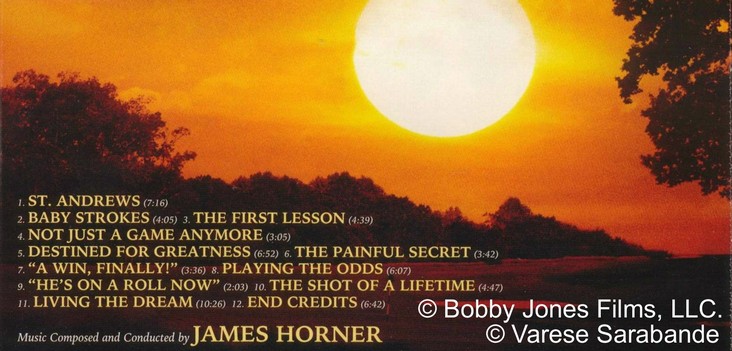
This bright atmosphere is used over almost the 63 minutes of the album and is reflected in the film at several times. Director of photography Tom Stern, acknowledged for his work on Clint Eastwood's latest films, manages to flood the film with a particular light therefore applying a unique charm.
The opening cue St Andrews starts the disc with a quiet and calm atmosphere, perfectly illustrating the daybreak, the quietness of dawn, the placidity of the morning that successively skim the surface of the golf course of the Scottish town. James Horner signs his music in a traditional way, namely a soft fabric of strings coming from House of Cards, Braveheart or Enemy at the Gates, to almost naturally evoke the peaceful visual of the main credits.
The opening cue St Andrews starts the disc with a quiet and calm atmosphere, perfectly illustrating the daybreak, the quietness of dawn, the placidity of the morning that successively skim the surface of the golf course of the Scottish town. James Horner signs his music in a traditional way, namely a soft fabric of strings coming from House of Cards, Braveheart or Enemy at the Gates, to almost naturally evoke the peaceful visual of the main credits.
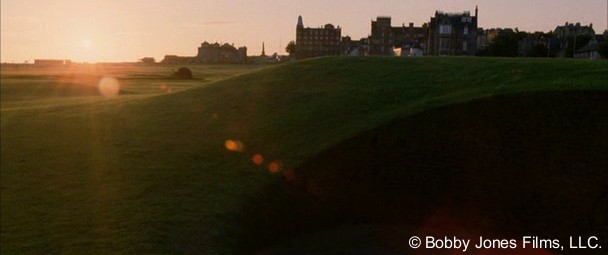
Eric Rigler's uillean pipe soars as the film's title appears on screen. James Thatcher's horn embellishes the scene where the legendary golf player appears and both instruments couple when the champion arrives in the starting area of the course. Like a painter, the composer sprinkles his score with successive touches of instruments, like many colours adding together to form a brittle balance, yet always in harmony with the picture.
At 4:48, a long chime describes the champion's charming swing and propels the film and its music into Bobby Jones' joyful childhood to the tune of a lively Celtic jig.
At 4:48, a long chime describes the champion's charming swing and propels the film and its music into Bobby Jones' joyful childhood to the tune of a lively Celtic jig.
"Bobby Jones is an erudite and his accompaniment required an enjoyable and festive ornament."James Horner
At 6:28, the frequently ending-cue horn, majestically returns to evoke the young boy's attraction to golf, his pleasure of practicing and the sports legend he shall be. The light of this first day declines and lightens Bobby's happy and dreamy face.
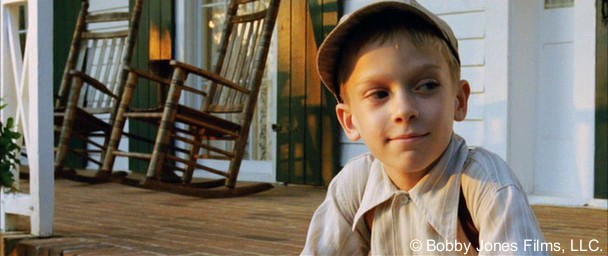
Rowdy Herrington's film then offers a succession of morning scenes: the cue The First Lesson opens on the sun gleaming through the leaves of a tree. James Horner depicts those instants with a subtle play of the woodwinds: two flutes through a fabric of clarinets.

Then the camera frames the golf course where the Jones family arrives to attend a lesson. The dew, the relaxing singing of the birds, the fresh atmosphere that gives the characters clouds of breath, their clean clothes… all these elements help create a pleasant and quiet atmosphere. James Horner introduces an oboe that plays a reminiscence of A Beautiful Mind, which increases the feeling of attachment.
"There is some John Nash in Bobby Jones. A triumph of the human spirit over the very nature of man and the difficulties of an art, a sport or a profession pushed to the extreme."James Horner
Then the horn returns to write a new page of the building legend, when the young boy gets his first set of clubs, given by his father's golf teacher.
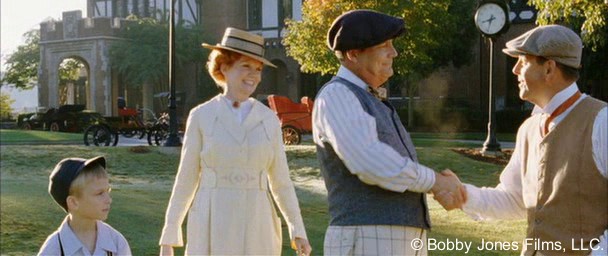
Most scenes of the film nourish this feeling of fresh spring. For instance in the following scene, as soon as awaken, the young Bobby Jones and a girlfriend go admire champion Harry Vardon in demo. As they are skipping class, the celtic theme is heard again in a malicious and rural variation, reminding the clowning of a crew of young dinosaurs (Foraging For Food in The Land Before Time).
During his adulthood, Bobby Jones continues competitions, which start early in the day. The shadows are typically stretched.
During his adulthood, Bobby Jones continues competitions, which start early in the day. The shadows are typically stretched.

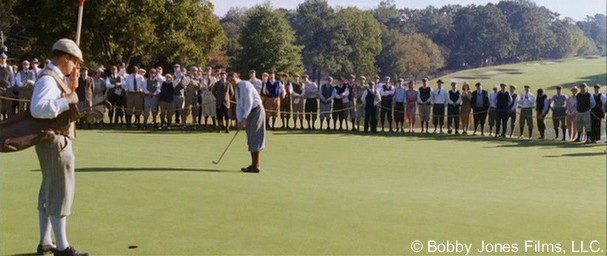
The cue "A Win, Finally!" follows a very beautiful dawn scene when Bobby Jones meets his journalist friend O.B. Keeler (wonderful Malcolm McDowell).
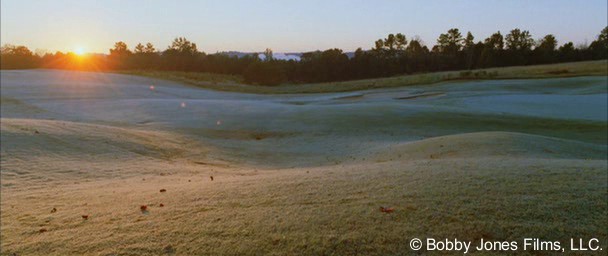
The quiet and peaceful atmosphere enhances the first bars of the cue. This is a key passage of the film, when the champion lets go of all his doubts of youth to finally win for the first time in an Open.

Ian Underwood's synth describes the young man's realization of the scale of his talent, while Robert Zimmiti's percussion announces the fight. Later on Eric Rigler's uillean pipe and Tony Hinnigan's flute will follow to properly celebrate this liberating victory.
"A Win Finally was composed in this spirit: the search for victory and for emancipation. It sounds like a fight, hence that rhythm in a major key, which evolves towards optimism and victory, this "freedom" brought by the celtic music and its typical orchestration."James Horner
The multiple returns to St Andrews will always be accompanied by the strings heard in the first cue. This may sound repetitive, but the osmosis with the pictures cancels this feeling. Each time, the colours of the sky and the soft wind induce rest and meditation.
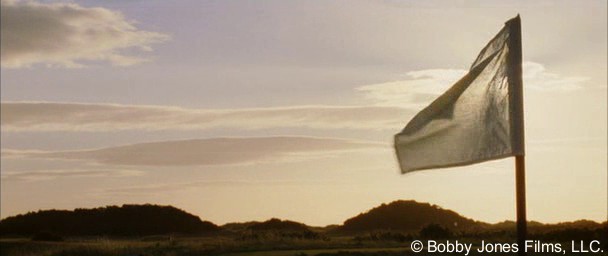
As Bobby Jones says in the second half of the film: "This field has an aura and I realize this only now". Because of James Horner's music, the audience could feel this aura whenever the field is shown.
In the finale (Living The Dream, 8:15), the dazzling music highlights the vision of a field in early morning, which will become the Augusta National Golf Club, a private golf course created by Bobby Jones, located in Georgia where the Masters are held every year.
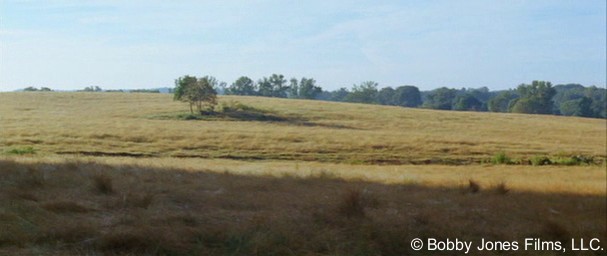
James Horner's music is definitely in total harmony with the scenery and the spring and summer vibes of the film. Embellished by remarkable solo performances, the score is a perfect companion between the two equinoxes.
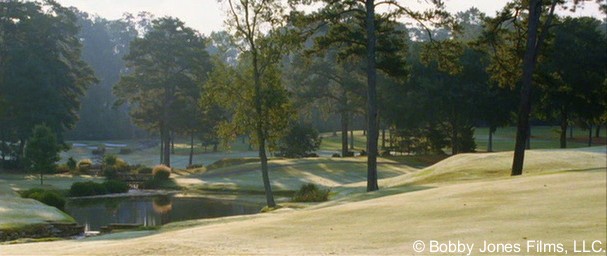
We dropped many aspects of this score, notably its emotional one (a shame for a James Horner album). Yet, the human feelings are once again featured here, especially a moving treatment of father and son relationships in the heartbreaking passage of the epilogue (Living The Dream at 5:45), as well as the difficulties of high level sport (Not Just A Game Anymore, Playing The Odds). We hope however having said enough to give you the desire to discover or see this amazingly fresh film again, which leaves James Horner's music to speak freely in a rare way.
Happy spring!
All quotes of James Horner taken from JH et des poussières : quand la famille Delajungle rencontre Hélène de Troie et Bobby Jones (Cinéfonia, 2004).




